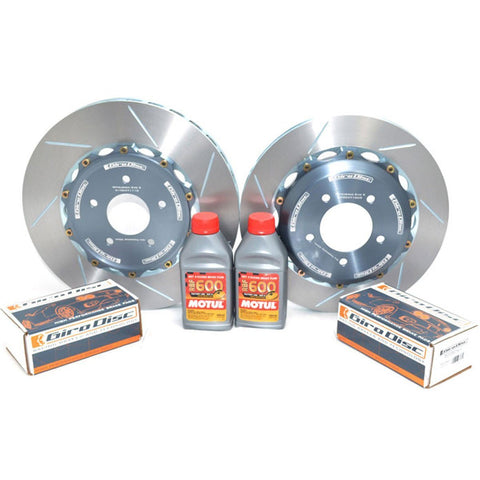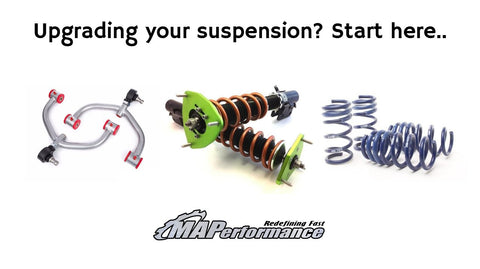Why Upgrading Your Brakes Should Be a Priority
When upgrading your car's performance, it is important not to neglect the brakes. A vehicle with a standard engine and a typical workload can manage with the original brakes. However, once you start making power upgrades, you begin putting additional stress on your brakes. A car that can go faster also needs a reliable way to stop. Safety is the top reason to look for performance brakes. They can decrease stopping distance and make it easier to handle your vehicle in extreme conditions or high speed. Brakes also get a lot of wear and tear, so upgrading them can help you save money on frequent repairs and replacements. When a car's brakes sustain a higher level of wear than they are equipped to handle, brake fade can set it. As a result, after driving for a while, you will see that the brakes lose effectiveness when the amount of stress on them increases. If you have to apply increasingly more force to the pedal in order to slow down, you may be dealing with brake fade and need to upgrade your brakes.
Brake Lines
Stock brakes usually come with rubber lines. One popular upgrade consists of purchasing high-quality braided stainless steel lines instead. Because stainless steel brake lines are less flexible than rubber, they offer a better brake feel. These lines also make it easier to regulate brake pressure and result in quicker response. Typically, upgraded brake lines consist of a Teflon inner line covered with braided stainless steel. The inner line should be durable enough to handle brake fluid. As vulnerability to abrasion has been a concern when it comes to steel lines, high-quality models often come with a PVC or other resistant coating that protects against it.
Rotors
Initially used for racing performance, slotted rotors increase airflow over the brake disc. This reduces the heat that is generated by stress on the brakes and therefore improves durability. Because the slots in the rotors may undermine its structure and make the rotor more fragile, it is important to purchase high-quality performance rotors from a reputable source. Slotted rotors can also keep your braking surface cleaner. The increased airflow reduces the dust buildup that can otherwise accumulate. They can also keep water away and retain a high level of stopping power in rainy weather. Another option that enables the rotor to let more air pass through is cross-drilling. Some models combine both techniques for improved airflow. These kinds of rotors are helpful when your vehicle use includes frequent, heavy braking. Top-quality rotors combine heat-reducing structure with durability. The level of durability and heat reduction you need depends on the type and intensity of the performance you will expect from your car.
Brake Pads
Brake pads are the component that undergoes the most stress every time you apply the brakes. They come into contact with the rotors and are instrumental in getting the car to slow down. They are vulnerable both to the heat generated in this process and to a high degree of wear, which results in the necessity of frequent replacement and also creates a high level of dust buildup that can reduce performance. Top concerns in selecting your brake pads include durability, noise control, ability to withstand heat and the amount of dust generation. Your specific priorities will depend on how you intend to use your car. If you will be track racing, for instance, you may not need to worry about controlling noise. Performance brake pads are often made of ceramic or semi-metallic compounds. Para-amid composites are becoming increasingly common as a top brake pad material. These composites are synthetic fibers with a high degree of durability and heat resistance. They are also effective in reducing noise, which is a major consideration for those looking for high performance outside the race track. The density of the fibers stays uniform even when heat fluctuates, providing consistent friction. Para-amid pads such as these WRX brake upgrade pads can improve performance and help the other components of your brakes last longer.
Upgrade Kits
While some people prefer to purchase specific brake components separately, brake kits can make upgrading your car significantly easier. Choosing a kit that is right for your vehicle and your purposes ensures you get all the components you need. There are several types of kits available. For example, if you want to improve drag racing performance, you might benefit from a lightweight kit such as the Lancer Evo brake upgrade kit, whose components are smaller and lighter than standard. However, this type of kit is not optimal for a setting where you would need to keep braking on a regular basis. Big brake kits include components that deliver a full range of benefits you expect from upgrading your brakes. These include shorter stopping distances, less wear and tear as well as better handling. Kits typically include rotors, brake pads, calipers and brake lines for either the rear or the front set of brakes. You can choose from many types of brake kits. Pay attention to the components' materials. You also want to select parts that will boost the kind of performance you need. For example, a vehicle used for track racing has different requirements from one you drive in the streets. Upgrading your brakes should be an integral part of any performance upgrade you undertake. Installing performance brakes will improve your driving safety as you push your car further and harder. Brakes designed to keep pace with your vehicle's speed and power will also make it easier to handle turns and maneuvers.





Comments (0)
There are no comments for this article. Be the first one to leave a message!